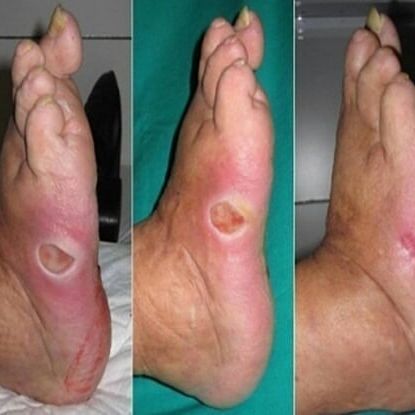A pressure injury (bedsore) is an injury that happens when different kinds of force are applied to the surface of the skin. There are several stages of pressure injuries that describe the severity of the injury. It is important to avoid infection when you have a pressure injury. If the wound becomes infected, the rest of the body is at risk.
How are pressure injuries treated?
Pressure injuries can be treated in many ways depending on the stage. Once the stage and severity of the wound is determined, it must be cleaned, usually with a saline solution. After the wound is cleaned, it needs to be kept clean, moist, and covered with an appropriate bandage. There are several different types of bandages your doctor may use to dress the wound. These include:
- Water-based gel (hydrogel) with a dry dressing
- Foam dressing
- Hydrocolloid dressing
- Alginate dressing (made from seaweed)
Sometimes debridement is needed. This is a process of ridding the wound of dead tissue. Debridement is an important part of the healing process. It changes the wound from a long-lasting (chronic) one to a short-term (acute) wound. There are several types of debridement. These methods include:
- Ultrasound: Using sound waves to remove the dead tissue.
- Irrigation: Using fluid (often pressurized) to wash away dead tissue.
- Laser: Using focused light beams to remove the dead tissue.
- Biosurgery: Using maggots to eliminate bacteria from the wound.
- Surgery: Using surgery to remove the dead tissue and close the wound.
- Topical: Medical-grade honey or enzyme ointments.
Diabetic Foot Ulcers
People who have lost their sensation of pain often develop ulcers on the soles of their feet. This is often due to the fact that they exert so much pressure on one specific area that a callus forms there. As the patient can’t feel pain, the callus can continue to develop until eventually the pressure becomes so much that the tissue is actually broken down and an ulcer forms.
Ill-fitting shoes are another cause of foot ulcers as they rub or pinch the same area of the foot repetitively causing injury and harm without the diabetic feeling it. An ulcer is an open sore or wound that needs to be treated by a Podiatrist immediately to lower the risk of infection in the ulcer and to prevent amputation.
Diabetic Foot Ulcers Treatment
Treatment for diabetic foot ulcers may include:
- Topical medication or dressing for the ulcer
- Reducing the pressure around the ulcer site (referred to as off-loading) by using special footwear, crutches, braces or a wheelchair
- Removal of dead skin around the site (called debridement)
- Education on good foot health and prevention of problems if the ulcer has become infected
- Antibiotics and maybe even hospital care might be required
Self-care is not advised in the case of a diabetic ulcer and the quicker professional treatment is sought and the healing process began, the lower the chance is of developing an infection. Our Podiatrist will instruct you on how to manage the care of the wound between visits.








